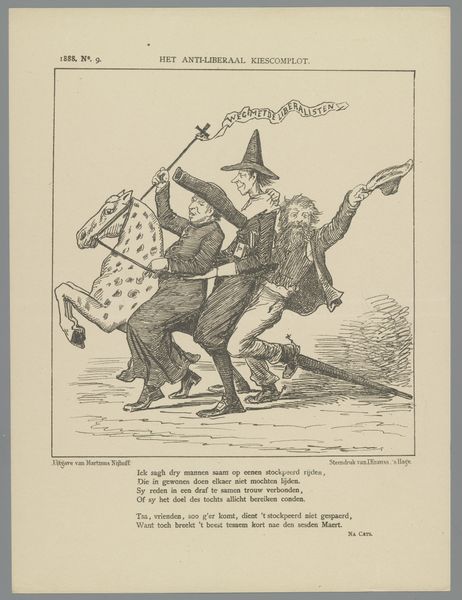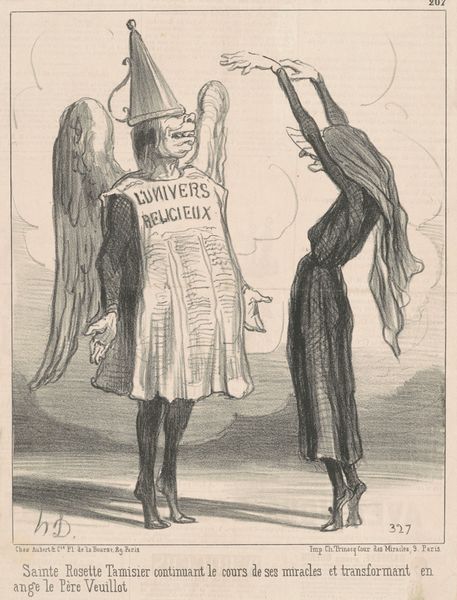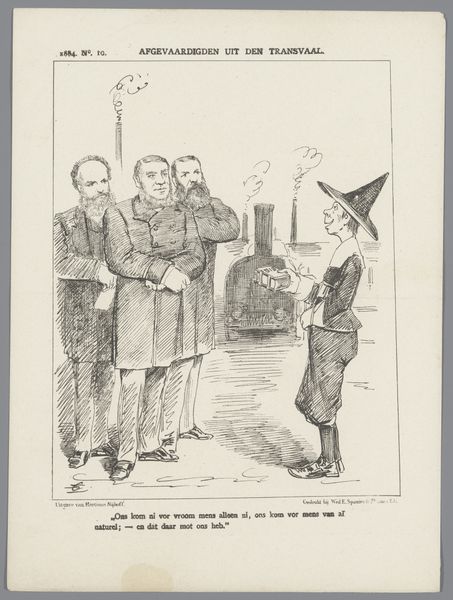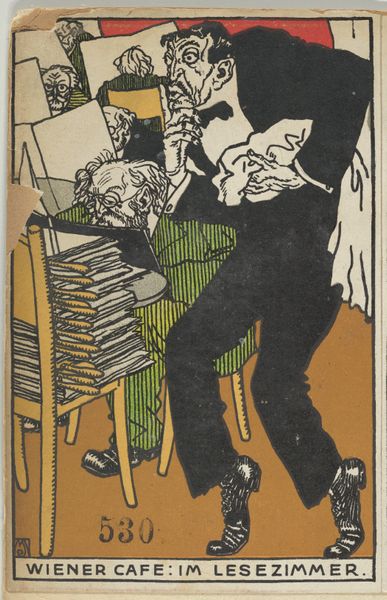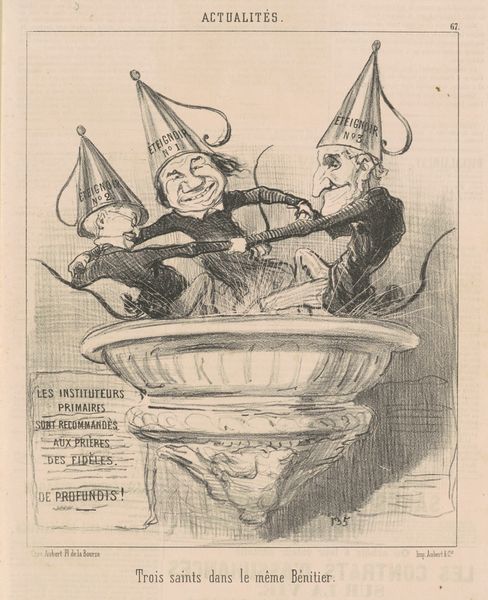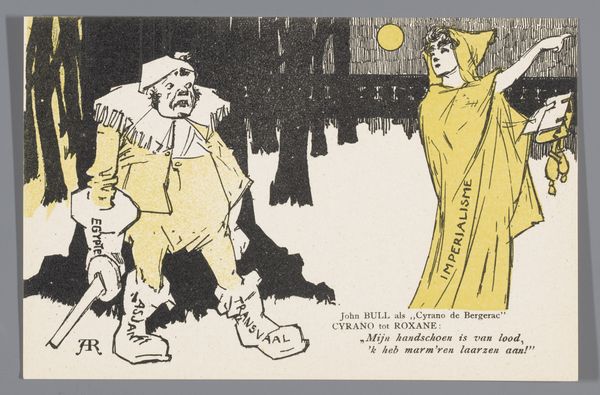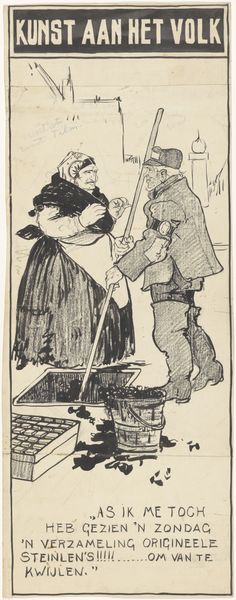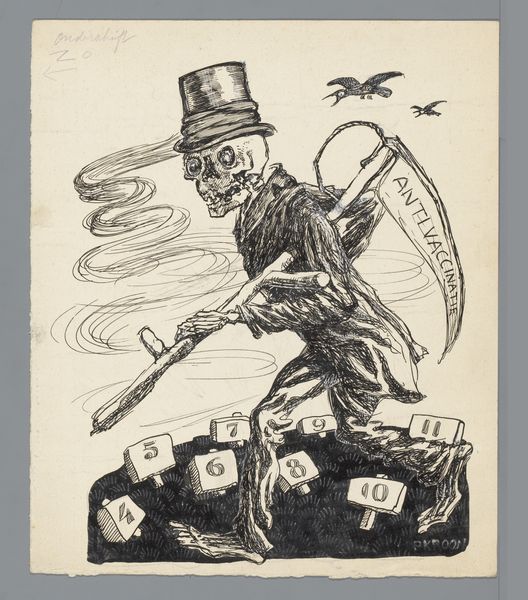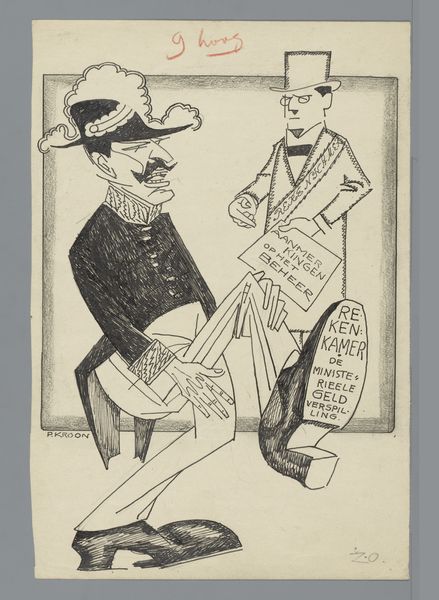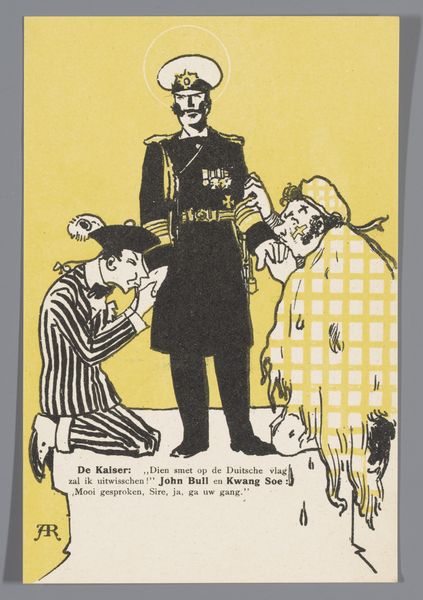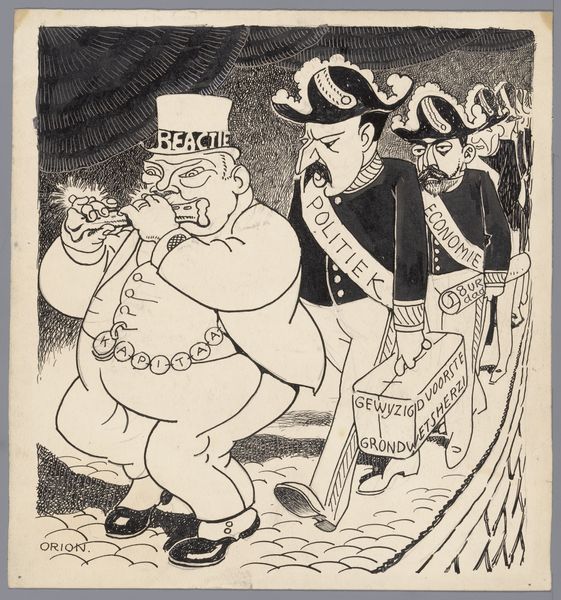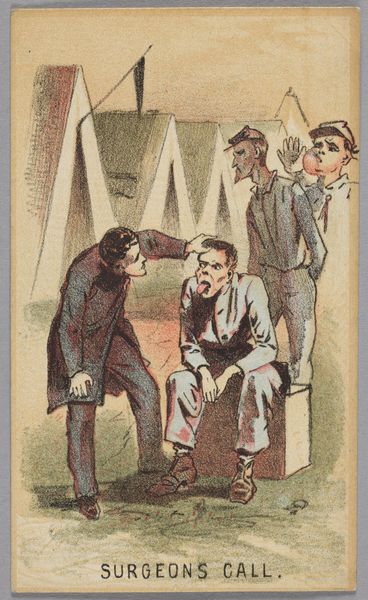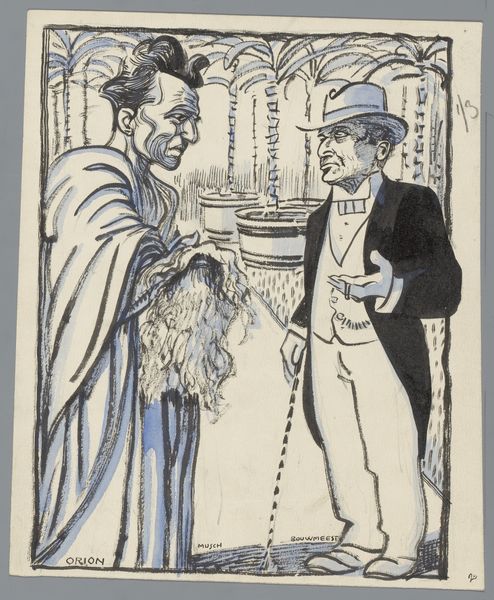
drawing, print
#
drawing
#
comic strip sketch
#
quirky illustration
#
cartoon like
#
cartoon based
# print
#
caricature
#
cartoon sketch
#
personal sketchbook
#
illustrative and welcoming imagery
#
sketchbook drawing
#
cartoon style
#
storyboard and sketchbook work
Dimensions: height 100 mm, width 145 mm
Copyright: Rijks Museum: Open Domain
Editor: So, this print by Alfaro Reijding is called "China prentbriefkaart 'Na den oorlog afrekenen,'" dating from around 1900-1918. It’s a drawing, looks like a caricature... it's got this really sarcastic feel to it. What’s your take? Curator: It’s definitely dripping with sarcasm! And situated within a very specific historical context. The caricature invites us to consider power dynamics at play, specifically European colonialism’s reach into Asia. Who are these figures, and what do their exaggerated features suggest about their roles in this geopolitical chess game? Editor: One guy's got “Transvaal” written on his head! Curator: Precisely! This identifies one figure, likely representing British interests in South Africa. The other figure, in what appears to be East Asian dress with “Korea” emblazoned on the robe, evokes imperial ambitions in East Asia, perhaps referencing the role of Japan. The document they examine together suggests debts or claims related to war, so this caricature clearly critiques colonial expansion as transactional and exploitative. It highlights the racialized power imbalances inherent in these encounters. What do you make of that visual association of national identities and financial bargaining? Editor: I see that it's a political commentary on imperialism, using caricature to critique the power dynamics between colonizers and colonized regions, portraying it as a crude financial deal. Curator: Absolutely! It's a cynical snapshot of an era, revealing the ideological underpinnings of colonialism – this idea that nations could be 'owned' or bartered. What lessons might it offer for our contemporary moment? Editor: It reminds me that historical power imbalances still affect international relations today. Curator: Indeed. It challenges us to think critically about whose voices are amplified, and whose are silenced in global narratives.
Comments
No comments
Be the first to comment and join the conversation on the ultimate creative platform.
